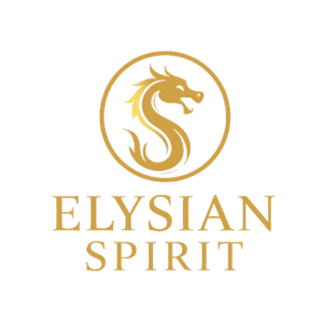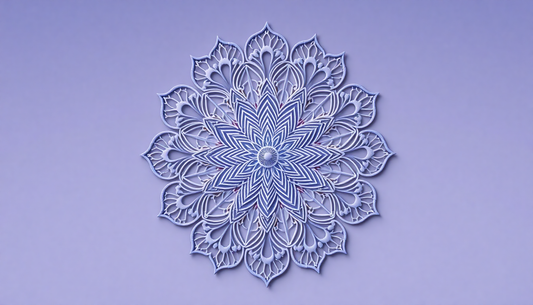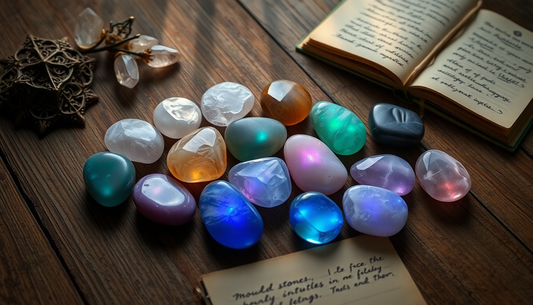
Tarot vs. Oracle Cards: What's the Difference?
In the world of divination and spiritual exploration, two distinct card systems have gained widespread popularity: tarot and oracle cards. While both offer insights and guidance, they differ in their origins, structure, and the way they are interpreted. Understanding the nuances between these two modalities can help you choose the one that best aligns with your personal preferences and spiritual journey.
The Origins of Tarot and Oracle Cards
Tarot cards have a rich history that can be traced back to the 15th century in Europe. Originally used for gaming, the tarot deck evolved into a tool for divination and self-discovery. The traditional tarot deck consists of 78 cards, divided into two main sections: the Major Arcana and the Minor Arcana.
The Major Arcana represents the archetypal energies and life lessons, while the Minor Arcana delves into the more mundane aspects of daily life. Each card in the tarot deck has a specific meaning and symbolism, often rooted in Jungian psychology, mythology, and esoteric traditions.
In contrast, oracle cards are a more modern and diverse form of divination. Unlike the structured tarot, oracle decks can vary greatly in their themes, imagery, and the number of cards they contain. Oracle cards are often created by individual artists or spiritual teachers, reflecting their unique perspectives and intuitive insights. They are designed to provide guidance, inspiration, and a deeper connection to one's inner wisdom.
The Structure and Interpretation of Tarot and Oracle Cards
Tarot decks follow a well-established structure, with the Major Arcana and Minor Arcana working together to create a comprehensive system of interpretation. The Major Arcana represents the archetypal journey of the human experience, while the Minor Arcana delves into the more practical aspects of life, such as relationships, finances, and personal growth.
When reading tarot, the reader typically follows a specific spread or layout, which can range from simple three-card spreads to more complex Celtic Cross or Astrological spreads. The interpretation of the cards is based on their individual meanings, as well as their position and relationship within the spread.
Oracle cards, on the other hand, are more fluid and intuitive in their approach. Each oracle deck has its own unique set of cards, often with evocative imagery and concise messages. Oracle readings are generally more open-ended, allowing the reader to draw cards intuitively and interpret the messages based on their personal connection to the cards and the specific situation at hand.
The Differences in Approach
One of the key differences between tarot and oracle cards is the level of structure and tradition involved. Tarot follows a well-defined system with established meanings and interpretations, making it a more structured and analytical approach to divination. This can be particularly appealing to those who seek a more comprehensive and systematic way of understanding their lives and the world around them.
Oracle cards, on the other hand, offer a more intuitive and open-ended approach. They allow for a more personal and creative interpretation, as the reader can draw upon their own intuition and spiritual connection to the cards. This can be especially beneficial for those who prefer a more fluid and spontaneous way of exploring their inner landscape and seeking guidance.
Another distinction is the level of complexity involved. Tarot decks typically have a larger number of cards (78) and a more intricate system of meanings and symbolism, which can make them more challenging to learn and interpret, especially for beginners. Oracle decks, with their more diverse and often simpler card designs, can be more accessible and approachable for those new to the world of divination.
Choosing Between Tarot and Oracle Cards
Ultimately, the choice between tarot and oracle cards comes down to personal preference and the type of experience you're seeking. If you're drawn to a more structured and comprehensive system of divination, with a rich history and established meanings, tarot may be the better fit. If you prefer a more intuitive and open-ended approach, with the freedom to explore your own interpretations, oracle cards may be the way to go.
It's also worth noting that many individuals find value in using both tarot and oracle cards, as they can complement each other and provide a more well-rounded perspective on their lives and spiritual journey. Experimenting with different decks and approaches can be a rewarding and enlightening experience, allowing you to discover the system that resonates most with your unique needs and preferences.
Ultimately, the choice between tarot and oracle cards is a personal one, and the best way to determine which is right for you is to explore both and see which one speaks to your heart and intuition. Whichever path you choose, may it guide you towards a deeper understanding of yourself and the world around you.


